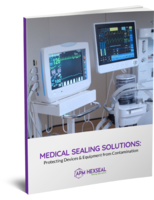Supply Chain Management Services
Why a Systematic Approach to Class C Components Works Best
When it comes to selecting a class "c" components supplier and, it is well worth remembering that poor logistics or quality control can mean much more than losing money. It can mean losing a customer. That's why it's so important that you work with a vendor-managed inventory (VMI) specialist that provides you with a comprehensive supply-chain management system.
Of course, that is easier said than done. Not every VMI company is up to the task.
When selecting a VMI company, you'll want to be sure it has the flexibility, creativity and intelligent systems it takes to integrate and manage each step from procurement to inventory control.
After all, with the thousands, or tens of thousands of fasteners, screws, bolts clips and other class "c" components your plant goes through every day, it doesn't take much for the wrong two-cent part to become a million-dollar headache.
The right part, in the right place, at the right time, at the right price.
That shouldn't be a wish list. That's what you should expect from your class "c" components supplier. Nothing less. And if who you're talking to doesn't have a proven systematic approach in place, well, they may talk the talk, but they sure can't walk the walk. A systematic approach is the only way to keep you from spending a dollar to keep track of a dime.
One of the class "c" components companies that uses an advanced lean-distribution system to improve the supply chain and make it more productive is ASF Components. Here are some processes used in the ASF Components system.
Assembly Packaging —Optimum/cost effective packaging combinations are determined, and value packing of multiple components is explored. Also, ways to improve assembly and packaging speed and efficiency, while uncovering "green" packaging cost-saving options are delved into.
Manufacturing to lineside point-of-use-part work cells — A process to manage inventory by plant, work cell and individual bin is included; the OEM is able to identify inactive/excess inventory to be repurposed; plus, reduce delivery times and reduce in-plant inventory. This system also includes design of ergonomically correct workstations and a schematic showing where on the plant floor the components need to be.
Strategic account management — The system is built to manage contracts and goals, and report monthly. It processes all accounting functions and ensures on-time orders, shipments and payments.
Management inventory control — Hundreds or thousands of different products from numerous suppliers can all be moved to one point at the right time.
With an integrated system such as I've described above, the improved supply chain efficiency will reduce costs and work toward zero defects; errors will decrease, and your warehouse and manufacturing space will significantly increase.
Sound good? Then now's the time to get with the system.




